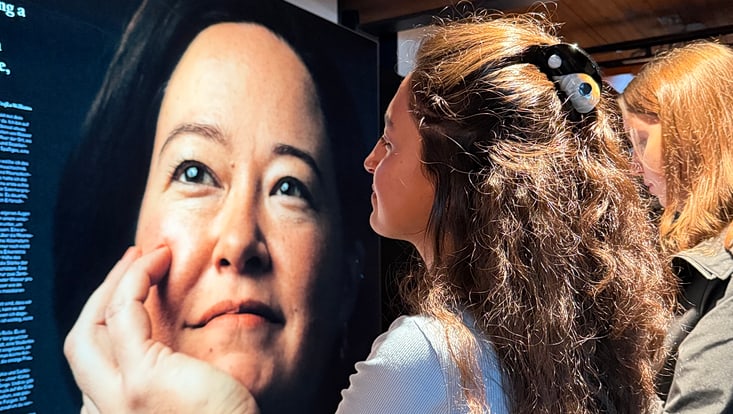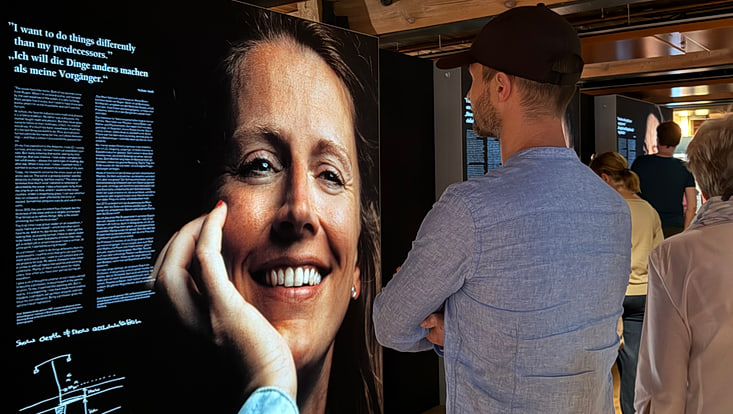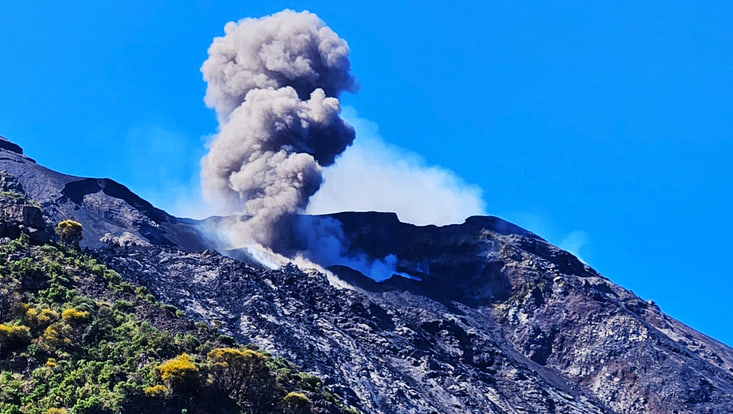New Exhibition: Women in Marine ResearchStories of claiming space and making waves – opening of "Breaking the Surface"
28 July 2025, by Thomas Merten

Photo: Miriam Frieß/UHH
More than 130 guests celebrated the opening of Breaking the Surface. The exhibition portrays eleven female scientists, their questions for the ocean – and their experiences with glass ceilings.
On Thursday, the photo exhibition "Breaking the Surface. Women in Marine Research" was ceremoniously opened at the International Maritime Museum Hamburg (IMMH). Over 130 guests attended the vernissage, including many early-career scientists. The exhibition presents eleven portraits of researchers from northern Germany who are shaping oceanography with their work. Among them are Johanna Baehr from the University of Hamburg, Antje Boetius, formerly of the Alfred Wegener Institute in Bremerhaven, and Katja Matthes from GEOMAR in Kiel. What unites them is curiosity, a passion for research and the sea – and the determination to overcome structural barriers.
These scientists make crucial contributions to our understanding of the oceans, whether through climate modeling, deep-sea research, or the measurement of the North and Baltic Seas. Their work addresses questions such as how the Atlantic Meridional Overturning Circulation affects the global climate, how biogeochemical cycles operate, how sea ice evolves, or the role of the ocean as a CO₂ sink. Their insights help to decipher the complex interplay between ocean, atmosphere, and human influence – and show what this means for future generations.
Often overlooked in a male-dominated field
“Those embarking on this expedition into uncharted waters will discover much that is both fascinating and enlightening,” said Jan Tersteegen, board member of the IMMH, in his welcome address. The exhibition – a project within the UN Decade of Ocean Science for Sustainable Development – not only highlights science, but also what it means to assert oneself as a woman in a male-dominated field. Throughout history, women’s scientific contributions were often overlooked, and many were denied advancement. Even today, women in science face disadvantages, mansplaining, and glass ceilings.
 Miriam Frieß/UHH
Miriam Frieß/UHHMaryam Blumenthal, Hamburg’s Senator for Science, pointed out in her speech that while gender parity is relatively balanced at the start of university studies, only around 35 percent of professorships in Hamburg are held by women. “That’s a comparatively high figure nationwide, but it still does not reflect half of society.” The exhibition also reveals the barriers that female researchers must overcome in their careers: “Much of what these women have achieved has made it easier for those who follow.”
The initiative for the exhibition came from Johanna Baehr, who became the first professor of physical oceanography at the Institute of Oceanography at the University of Hamburg several years ago. During the opening, she emphasized how vital networks among women scientists are: “We asked ourselves: How did we manage to stay in ocean research? And we realized: through networks. This exhibition aims to be one of them.”
Personal portraits – beyond ships and labs
The portraits were created by photographer Marzena Skubatz. She presents the researchers in close-up: larger-than-life portraits without stage, lab, or ship. Personal statements, a historical timeline of pioneering women in ocean science since the 18th century, and a video installation by designer Arved Lindau complement the exhibition. Lindau artistically explores the questions these scientists still pose to the sea.
“Will humanity still manage to turn the tide and protect the ocean?” asks Maren Voß from the Leibniz Institute for Baltic Sea Research in Warnemünde. Or: “How exactly does upwelling work?” wonders Joke Lübbecke from the University of Bremen. And Stefanie Arndt from the University of Hamburg still urgently wants to know: “Why is the area of Antarctic sea ice shrinking, but the ice itself not getting thinner?”
The exhibition Breaking the Surface. Women in Marine Research will be on view until the end of the year on Deck 7 of the International Maritime Museum Hamburg. The portraits and in-depth interviews with the scientists can also be found online: www.breaking-the-surface.com


